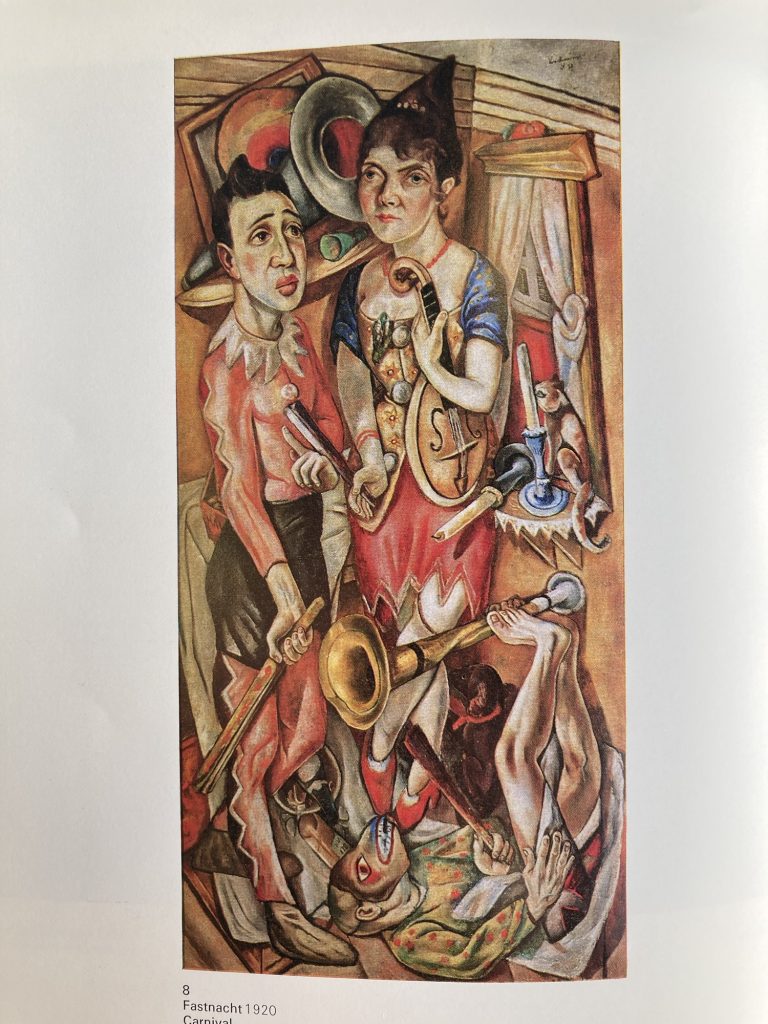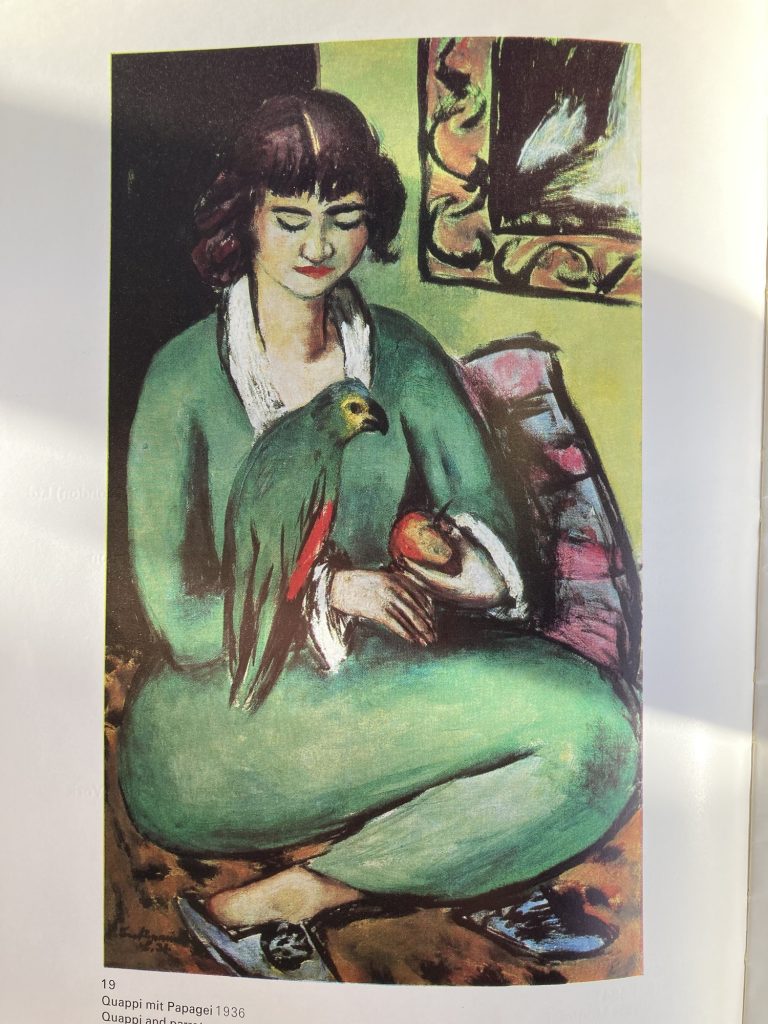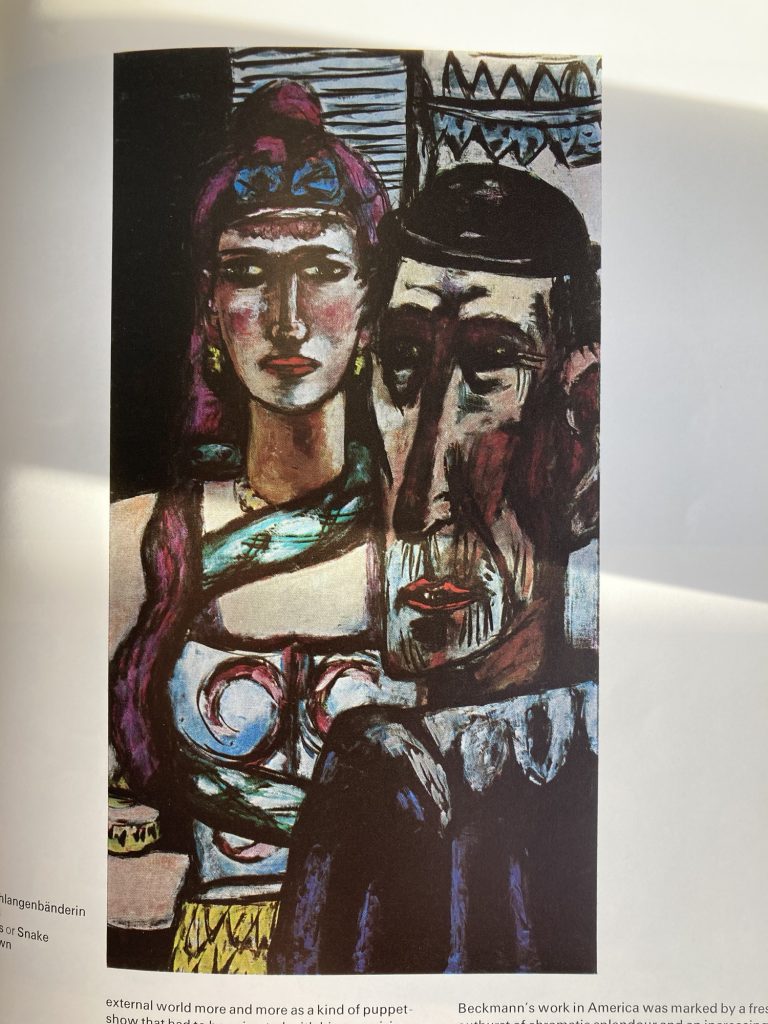

This little paperback volume, that I recently got for £3 (from a charity shop in Cambridge), is a publication by/for the Marlborough Fine Art Gallery, of Bond St, London.

It’s described as ‘a small loan retrospective… based around his visit to London in 1938.’ I’m looking forward to learning more about this artist, who I first got to know and love – very much in passing – as an eager young kid, with naïve dreams of my future life as an artist!

The painting pictured above, Carnival, was the first Beckmann work that drew me in. Now I feel less drawn to it. It’s rather unctuously smooth! I think I now prefer his later slightly rougher ‘hatchet’ style, which looks like a cross between lino-cuts, stained glass (with all the black linear elements), and Expressionist painting.

I love green! So this painting is a new favourite. It’s not one I recall seeing in my previous youthful encounters with Beckmann.

I’m not usually one for figurative art, to be honest. But with certain artists I can make exceptions. I don’t go a bundle on many of Beckmann’s landscapes or still lives – though there are some I like – but occasionally Max’s people do it for me.

As usual, I’m keen to see what I might learn or absorb from a study of another artists’s style. I’d like do a series of figurative paintings – not sure what subject on as yet (jazz musicians, military subjects?) – with a very deliberate Beckmann influence.
Poss’ combining that with a bit of Stanley Spencer’s? To my mind and eye they share an approach to the picture space: their paintings are often like 3-D shallow relief friezes. They have depth and solidity, but all squeezed into a pretty compressed space.
These qualities – along with their distinctive palettes and predilection for expressive distortion – give their works an impressive energy.
